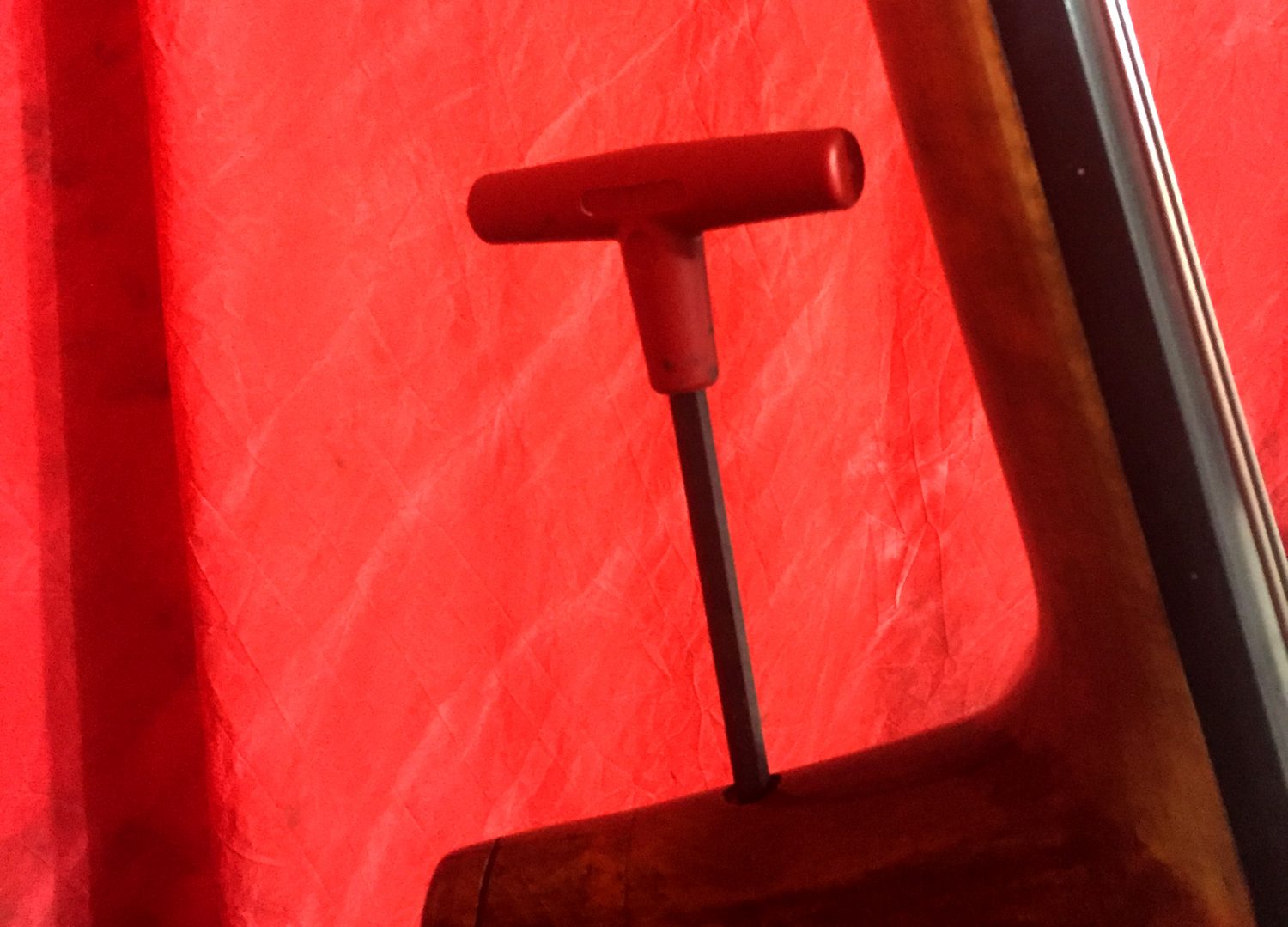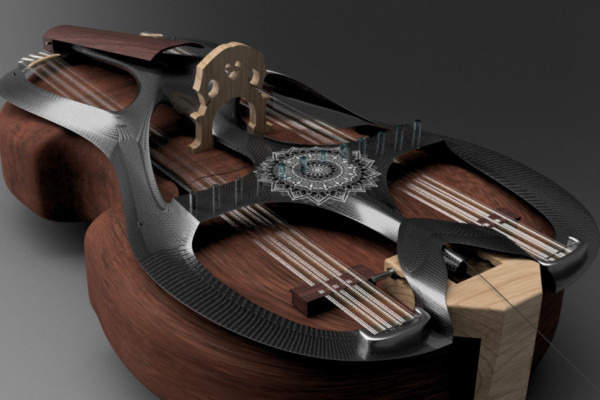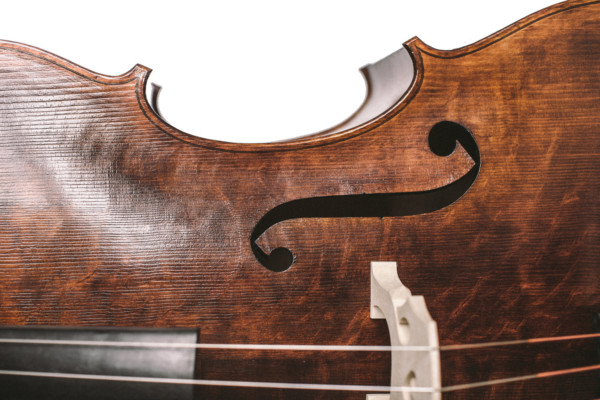Dealing with a Removable Neck

Q: I have read your latest column on the set-up of your bass and that you had a removable neck installed. I never had one and one of the reasons why I’m holding off on this is the fact that a removable neck also means a removable bridge. I mean: the bridge is not fixed on the bass, which is why one goes about once a year to the luthier to get it back in place. In my experience, that means a lot for the sound of a bass. If you have a removable neck, you have to do that on your own, every time, and usually not on a workbench. How does that play out for you? Best – Matteo.
A: Hello Matteo!
Thank you for your thoughtful question. You are very correct in that the bridge is not permanently installed. It’s only held to the top of the bass only by the tension of the strings. Even with a standard bass (with a permanent neck) it can move around. Of course, with a removable neck, one must loosen the strings and remove the bridge entirely, as you rightly note. Before I address your specific question about the removable neck, however, I want to talk a bit about the apparent systematic movement of your bridge, which is causing you to visit a luthier regularly to get it back in place.
People do occasionally go in to have their bridge placement adjusted, but generally only after it has been bumped in transport, on the gig, or from some other minor trauma. In general, the bridge shouldn’t move with regular use. An exception might be if you are using ultra-low tension strings, like Weedwackers, for example. Even if this is your case, and your bridge moves all the time, you can place the bridge in its optimal position on your own, provided it has been properly fitted in the first place.
What I mean by this is that the feet of the bridge should be flush, or at least nearly flush, with the top of the bass. There shouldn’t be any notable space between the feet of the bass and the belly of the bass when the strings are at full tension. Having properly fitted feet will help with any unwanted bridge movement and the sound. If it’s not properly fitted, however, the bridge may indeed move around on you.
Because properly fitted feet is a job done by hand, and the belly of the instrument is curved, there is really only one place on a particular bass that a particular bridge is designed to go. If the bridge moves, the feet will not have full contact with the bass, and this will not only be visible but, as you noted, also affect the sound adversely. Even so, if your bridge does move on you, you should be able to place it back in its original place on your own pretty easily, with just a bit of knowledge.
Once you have the bridge fitted and placed properly by your luthier, take note of where the feet lie in relation to the notches in the F-holes. On most basses, proper placement of the bridge is with the sides of the feet centered on the inner F-hole notch. Placing it here will ensure proper “up and down” placement. (i.e. between the fingerboard and the tailpiece). Of course, you bass may have a slight variance. Maybe the bridge is slightly higher than the inner notch, for instance. If so, just note the position so you can move it back there, should the bridge move on you for some reason.
On the other axis (left to right), take note of where the strings lie on the fingerboard, and also the relation of the feet to the G-side and E-sides of the fingerboard. Knowing this you can make sure it is set correctly in between the F-holes.
If you are particularly attentive, you can measure the distance of the E-side foot to the E-side F-hole, and the G-side foot to the G-side F-hole. Then you will have very specific information on this axis and can place it exactly back where it should be when it moves.
Knowing how the bridge should sit on the bass using these two planes, and also knowing that the feet should be flush with the belly of the bass, you should be able to place the bridge back in its proper place should it ever move on you. Even if it fell off entirely!
Another thing to note, if this placement doesn’t create the sound you wish, the thing to adjust is the soundpost, rather than the bridge. (This should be done by a luthier, in my opinion.) It’s the relationship between the bridge on the top and the soundpost inside the bass that actually affects the sound of the instrument. While the bridge remains stationary, the soundpost moves. Even a slight movement can make significant changes in the sound. Soundposts do indeed move over time and this should be checked on periodically. This is usually due to normal “breathing” of the top with temperature changes and humidity changes. The bridge, however, should remain in the same place.
Keeping the bridge in the same place is also important to ensure that your string length is the same every time you play. This means the notes are in the same place every time as well. It’s a hard enough beast without the notes moving around on us! Move the soundpost, not the bridge.
As you can see, with a little knowledge you can have a removable neck bass and easily replace the bridge in the proper position without the help of a luthier.
All that being said I do have a trick, which helps me replace the bridge quickly, and ensure it’s in the proper place. At the corners of both feet are very small, nearly invisible marks made with a graphite pencil. If I make sure the feet fit within these 8 marks (four for each foot) when I replace it (and the back side of the bridge is perpendicular to the top) then everything is in its proper place.
Some people have made a sort of tracing around the feet, which serves the same purpose. Others have made small “poke marks” on the top where the feet go, as well. As you have guessed, the main purpose of all of these ideas is to provide a template for where to place the bridge. Doing so makes putting the bass back together properly go a bit more quickly. It’s, definitely a bit quicker than measuring distances from F-holes and the like.
As for not having a workbench, I’m usually doing all this on a hotel bed or (in the worst case scenario) on a rug backstage. All you need is a flat surface and you are ready to go!
Thank you so much for your question! I hope you now know more than you ever wanted to know about bridge placement. Please feel free to send more along!.
Dr. Donovan Stokes is on the faculty of Shenandoah University-Conservatory. Visit him online at www.donovanstokes.com and check out the Bass Coalition at www.basscoalition.com.



